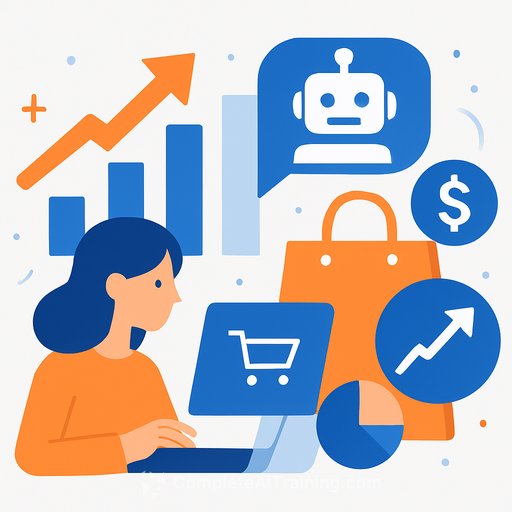Agentforce for Customer Support: What Matters, What Doesn't, and How to Pilot It
Salesforce is pushing hard on Agentforce, its AI agents platform built to automate work across support, sales, and marketing. The pitch: agents that can reason, pull data from multiple systems, and take action without hand-holding. The question for support leaders is simpler: will it lower cost per resolution and lift CSAT without creating chaos?
What Agentforce actually does
These aren't scripted chatbots. Agentforce uses AI "agents" that can triage issues, fetch account and order data, trigger workflows, and resolve cases end-to-end. Think automated Tier 0 and Tier 1 coverage with the ability to escalate to humans when needed.
Adoption vs reality
Salesforce says it has around 12,000 Agentforce contracts after roughly a year, but only ~6000 paying customers. That's about 4% of its 150,000 total customers paying for agents. The gap between pilots and paid rollouts has investors uneasy, and Salesforce's stock is down about 25% year-to-date while broader tech rises.
"The rate of innovation is so fast it has outpaced the rate of customer adoption," CEO Marc Benioff said. Salesforce reported $US9.44 billion in Q3 FY2025 revenue, up 8% year-over-year, but analysts want proof that AI converts to durable revenue. Jefferies kept a "buy" rating with a $US375 target, while warning the multiple won't expand until paid AI usage climbs.
Early results from the field
Executives at Dreamforce highlighted enterprise-grade use cases. PepsiCo aims to be "agentic-first" by 2026. Williams-Sonoma is personalising recipes and product recommendations with agents; CEO Laura Alber said, "I'm shocked that more people aren't adopting these things."
New Zealand telco OneNZ deployed nearly 100 agents across sales, service, and network ops. Reported outcomes: 5x ROI within months, customers engaging with plan-change flows 4x more than before, 60% faster campaign creation, and 20% lower mobile network energy costs. OneNZ set aside 25% of its AI budget for training and said AI has absorbed up to 50% of some roles. Building the first agent took eight hours; deployment took two weeks-data quality and integration were the blockers, not the tool.
Salesforce's own support numbers
Salesforce says its internal Agentforce implementation now handles about 1.8 million support inquiries monthly with a 77% resolution rate. That's the benchmark they're using to promote real-world viability.
Pricing snapshot
Salesforce started at $US2 per conversation and now offers multiple options: a $US0.10-per-action credit model, $US125-per-user/month for standard editions, and $US150 for premium industry solutions. There are pay-as-you-go, pre-commit, and pre-purchase paths. Jefferies research says 70% of customers are pushing back on Salesforce's recent 6% price increases, questioning whether AI add-ons justify the spend.
What this means for customer support leaders
- Pick high-volume, low-variance use cases first. Order status, password reset, returns, billing lookups, appointment changes. Keep it boring and measurable.
- Define hard metrics upfront. Target self-serve resolution rate, CSAT/NPS, deflection rate, average handle time, and escalation rate. Add cost per resolution and agent utilization.
- Get your data house in order. Clean knowledge articles, unify IDs across CRM/order/shipping, and map permissions. Most delays come from data and integration, not model quality.
- Design the escalation path. Require agents to hand off gracefully with full context, summarizing steps taken and data retrieved.
- Start with human-in-the-loop. Let agents propose actions and have humans approve for a subset of workflows before relaxing controls.
- Budget for change management. Train agents and supervisors on prompts, verification, and exception handling. Plan for role shifts rather than layoffs in phase one.
- Instrument everything. Log every action, data source, and outcome. Review weekly for failure patterns and knowledge gaps.
- Stage your rollout. Phase 1: limited intents in one channel. Phase 2: more intents and channels. Phase 3: deeper actions and automation.
Quick cost math you can run
Action-based: if a typical resolution takes 8 actions at $US0.10 each, that's $US0.80 per resolved case before platform fees and integration costs. Compare to your current cost per resolution. If your blended support cost per case is $US4-$US12, the margin for savings is clear-if accuracy holds and reopens don't spike.
Risks to plan for
- Data and integration debt. Dirty CRM fields and inconsistent order data will tank performance more than model choice.
- False confidence. Agents can sound certain and be wrong. Use confidence thresholds, content verification, and human approval on sensitive actions.
- Over-automation. Keep humans on complex exceptions, fraud, cancellations, and anything with legal or financial exposure.
- Pricing unpredictability. Test both action-based and per-user models against your actual intent mix and seasonality.
- Governance. Treat prompts, tools, and knowledge as change-controlled assets with versioning and rollback.
The broader picture
Salesforce expanded partnerships with OpenAI and Anthropic to embed newer models into Agentforce. It announced a $US7 billion share buyback over six months, $US15 billion in San Francisco investments over five years, and a goal of $US60 billion in revenue by 2030. Competition is fierce-Microsoft, Google, OpenAI, and AI-native startups are all chasing the same enterprise budgets.
Should you pilot Agentforce?
Yes-if you start small, measure hard, and keep humans in the loop. The tech is capable, but adoption is being held back by pricing clarity, integration work, and change management. If you can control those variables, agents can lower costs and shorten queues without wrecking customer trust.
Next steps
- Run a 90-day pilot on two to three intents with clear success thresholds.
- Stand up a cross-functional squad: support ops, knowledge, CRM, security, and finance.
- Model both pricing options against forecasted volume and action counts.
- Publish weekly metrics to leadership and front-line teams; adjust prompts and knowledge quickly.
Resources
Your membership also unlocks:






